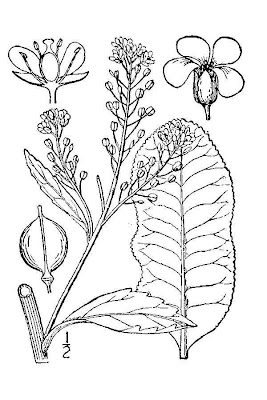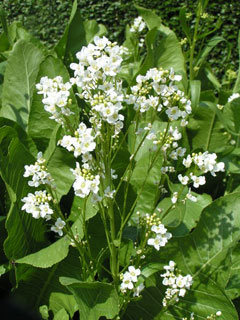Adaptation
Horseradish has adapted to its habitat over the years much in the same way other flowering plants have. These changes usually exemplify a function such as how there is nectar for pollinating insects to consume giving them an incentive to fly flower to flower spreading pollen therefore fertilizing the flowers. The top left image below shows how an insect must brush up against pollen to retrieve nectar.
USDA-NRCS PLANTS Database / Britton, N.L., and A. Brown. 1913. An illustrated flora of the northern United States, Canada and the British Possessions. 3 vols. Charles Scribner's Sons, New York. Vol. 2: 163.
On the stems of horseradish are photoreceptors that are sensitive to light which will make the plant grow and bend towards it. This is why flowers face up, as they point to the sun. the picture below shows the bright white flowers opening up to the sun. http://commons.wikimedia.org/wiki/User:Pethan
Horseradish has adapted to be a very resistant plant as it can grow in many temperatures and is fairly resistant to acidic or basic environments ranging from pH of 5.8 - 8.3. The entire plant can also grow from a few branches of root left behind, making it a plant that wont give up easily.
 http://www.wpclipart.com/food/vegetables/_assorted/assorted_2/horseradish.png.html
http://www.wpclipart.com/food/vegetables/_assorted/assorted_2/horseradish.png.html

